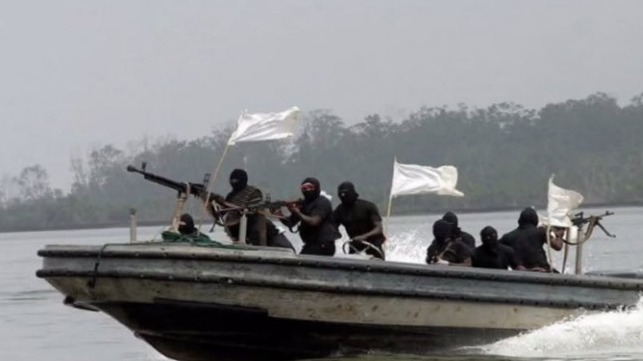The Mayflower Autonomous Ship lastly arrived on the coast of Nova Scotia final month, marking the tip of its lengthy trek throughout the Atlantic. Whereas the trendy Mayflower is way from the primary vessel to make that voyage, this small robotic boat is the biggest to ever accomplish that navigated by synthetic intelligence with no people aboard. A number of technical hiccups however, its journey is the most recent proof that the way forward for the excessive seas could possibly be autonomous.
Slowly, self-steering ships have gotten a actuality. In Norway, an autonomous battery-powered container vessel is shuttling fertilizer between a manufacturing unit and a neighborhood port, and pending a profitable trial, it could possibly be totally licensed inside the subsequent two years. A business tanker known as the Prism Braveness lately traveled from Texas, by means of the Panama Canal, to South Korea, guided by software program from Avikus, a subsidiary of HD Hyundai, a shipbuilding operation that was spun off of the automobile group. There are even some boats meant to move people that may now function on their very own: A self-driving water taxi created by the substitute intelligence startup Buffalo Automation was able to ferry individuals throughout the Tennessee River in downtown Knoxville, at the least as of April.
Not all robo-boats are created equal. Some present AI crusing software program is assistive, and requires at the least some type of monitoring from an individual onboard, whereas extra superior expertise can function a ship solely independently, with none want for people. Regardless, this new technology of autonomous vessels stands to make individuals a extra marginal a part of life at sea. As a result of many self-steering boats are nonetheless comparatively new, there’s not but sufficient proof to show that the expertise that powers these ships is as succesful as human navigators. Nonetheless, these autos couldn’t solely make it simpler to traverse the world’s waterways, but additionally accomplish that with a smaller carbon footprint than crewed boats.
“A pc may be optimizing for gas financial savings and integrating quite a lot of completely different inputs round how briskly they should be shifting by means of the water to succeed in their vacation spot on time, what the climate situations are like, how the vessel is working, [and] how the engines are working,” Trevor Vieweg, the chief expertise officer at Sea Machines Robotics, a startup that designs self-driving boats, informed Recode. “By utilizing those self same applied sciences, we will cut back carbon emissions — and gas burn general.”
To navigate independently, an autonomous boat sometimes wants all kinds of sensors, together with cameras and radar, in addition to information from different sources, like GPS. These sensors are positioned across the vessel, and assist a ship plan its route and sense close by obstacles, like, for instance, a floating log or a bit of an iceberg. As with self-driving vehicles, autonomous ships may be categorized into a number of ranges primarily based on how properly their tech can carry out with out human assist. The Worldwide Maritime Group, the United Nations company that regulates transport, has proposed a spectrum of autonomy beginning with Stage 1 ships, which might be operated by people however would possibly permit AI to make some unsupervised selections, and ramping up in sophistication to Stage 4 ships that would sail fully independently, with no human involvement or decision-making required.
Advocates say these ships are much less inclined to human error — ship and boat accidents are considerably widespread — and will permit boat operators to assign staff to different duties the place they are often extra productive. Synthetic intelligence might additionally navigate ships extra effectively, and make higher calculations about routes and speeds. The hope is that by saving time and, maybe most significantly, gas, ocean vessels can minimize down on their power consumption, which stays a major contributor to local weather change. Within the absence of full autonomy, some consultants have even advised that software program might allow people to steer boats remotely, which might include a number of advantages. As an example, remotely piloted ships would cut back the chance of spreading sickness by means of worldwide cargo transport, which has been a concern all through the Covid-19 pandemic.
Proper now, ships with autonomous capabilities symbolize a tiny fraction of the various vessels in operation right this moment. However sooner or later, self-steering ships might make all kinds of water-based actions extra handy. For instance, the Mayflower Autonomous Ship, which was supported partially by IBM, was designed to review the ocean’s well being, report audio of marine life, and take samples of microplastic. The boat doesn’t embrace a deck, loos, or bunks, and far of the house inside is occupied by its expertise, like its onboard computer systems, batteries, and motors.
“Not having people on board frees up/eliminates the house occupied by them and provides essential to maintain human presence, in addition to the facility that the ship requires to hold the burden entailed,” mentioned Ayse Atauz Phaneuf, the president of ProMare, the marine analysis group that labored on the mission. “Unmanned autos such because the Mayflower Autonomous Undertaking will have the ability to spend significantly longer time at sea, accessing important but distant components of the ocean.”
Phaneuf informed Recode that the car, and others prefer it, might ultimately make ocean analysis expeditions a lot cheaper to launch. Along with making it simpler to review the ocean, autonomous ships might additionally make it extra handy to move freight. In Japan, a partnership between a non-profit and freight transportation corporations efficiently confirmed earlier this yr that autonomous container ships might journey between ports all through the nation. The demonstration was meant to show that these autos might ultimately assist minimize down on the transport trade’s want for staff, particularly as Japan confronts an getting older inhabitants. There are additionally organizations like One Sea, which has introduced collectively transport and AI corporations to advertise autonomous ocean transportation, and to advance the expertise concerned.
There are these environmental advantages, too. HD Hyundai’s navigation tech works through the use of synthetic intelligence to find out a ship’s routes and speeds, and the software program additionally elements within the peak of close by waves and the conduct of neighboring vessels. The corporate says through the use of this AI, the Prism Braveness — the business tanker that traveled by means of the Panama Canal — boosted its gas effectivity by about 7 %, and minimize down on its greenhouse gasoline emissions by 5 %. Whereas that may not sound like rather a lot, these financial savings might add up rapidly.
Autonomous ships do face headwinds. One trade professional we spoke to mentioned that smaller boats, like survey vessels and ferries, usually tend to incorporate autonomous expertise than the big, container ships that make up the majority of the world’s freight transportation. Some critics, together with Maersk’s CEO, have argued that the financial savings that may come from autonomous software program is probably not sufficient to incentivize giant transport corporations to spend money on the tech, particularly since many ocean carriers don’t use notably giant crews within the first place (a typical cargo ship would possibly have simply 20 staff aboard). One other concern is that autonomous software program might make these ships extra susceptible to cyberattacks, although non-autonomous transport operations have already been hacked.
And eventually, there’s additionally the extraordinarily sophisticated matter of worldwide maritime legislation, which is probably not ready for the arrival of synthetic intelligence.
“How ought to we take care of the legal responsibility challenge the place an autonomous system, though correctly designed and maintained, acts unpredictably?” Melis Ozdel, the director of the College Faculty London Centre for Business Regulation, informed Recode. After all, there are lots of methods autonomous vessels might upend life at sea, whether or not it’s the opportunity of a robo-boat crashing right into a cruise stuffed with vacationers, or the unsure destiny of pirates who would possibly seize a ship, solely to find that it’s truly remote-controlled.
AI ships have already proven they will work, at the least typically, although the expertise that powers these vessels remains to be being developed and will require years to totally take off. Nonetheless, all indicators point out that these next-generation boats do have benefits. Finally, crusing would possibly look rather less like weeks out at sea and a bit of extra like monitoring a ship from the consolation of an workplace, conveniently situated on land.







